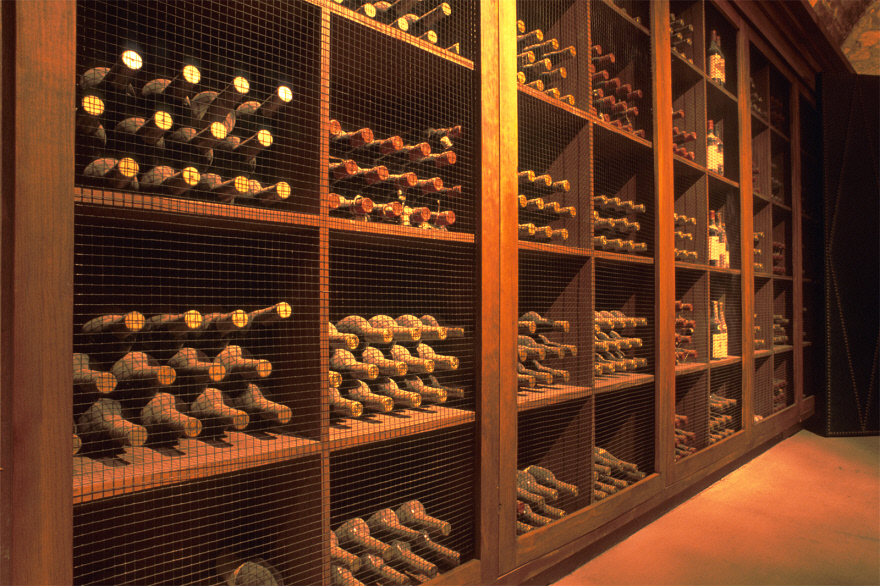In the 1920s, if you wanted to cross the Atlantic you got on a ship. Then Germany set up the world's first transatlantic air service for passengers, launching the Graf Zeppelin, the world's largest airship at the time. In 1930 it could fly you all the way from Germany to Brazil. You'd leave Friedrichshafen on Saturday night and arrive in Rio de Janeiro on Thursday morning.
By 1936 Germany had produced an even bigger blimp, the Hindenburg, which began shuttling passengers, cargo and mail from Frankfurt to New Jersey and back. The ship could carry 50 (later 72) passengers and had a crew of 40 to 60 people. The trip took about four days in each direction, and make no mistake, it was for rich passengers only; a one-way ticket was $400, which translates to about $7,050 in 2017 dollars.
![]() It's bizarre seeing the swastika flying over New York City. 1937, folks.
It's bizarre seeing the swastika flying over New York City. 1937, folks.So what did you get for your money? First off, the travel time was almost a day faster than going by ship, plus there was no chance you'd get seasick. The lift-off procedure was so gentle that passengers who weren't paying attention reportedly didn't realize that they'd left the ground. Once in flight, the voyage was said to be so smooth that you could balance a pencil on a table.
Speaking of tables, you ate the kind of luxury chow that "one might find at a traditional, high-end European hotel," according to Atlas Obscura, pointing out that the chef on the final Hindenburg voyage was from the Ritz in Paris. NPR lists "Beef Broth with Marrow Dumplings and Rhine Salmon a la Graf Zeppelin" as an example of a typical Hindenburg meal.
![]() The tables could alternatively be arranged in banquet style
The tables could alternatively be arranged in banquet style![]() The tables could alternatively be arranged in banquet style
The tables could alternatively be arranged in banquet style If you had a European palate, the food probably tasted delicious. Airplane food sucks because the high altitudes deaden our taste buds. But the Hindenburg flew just 330 to 650 feet off of the ground! The passenger areas were not pressurized (except for a single room, we'll get to that in a moment) and you could even open the windows.
Those windows were on the promenades locating on the port and starboard sides, inbound of which were a lounge and the dining room. The lounge even contained a grand piano, made from aluminum to save weight.
![]() The lounge
The lounge ![]() The lounge
The lounge![]() Downside of being in the lounge: Portrait of Hitler on the wall
Downside of being in the lounge: Portrait of Hitler on the wallAlthough weight was spared wherever possible--you'll note further down that they're using ladders perforated with holes--it wasn't to keep the blimp in the air, it was presumably so that they could haul more cargo. The lifting capacity of the blimp was such that they could even transport cars.
The kitchen was downstairs, and all heat sources were electric. Food was shuttled upstairs by a dumbwaiter that led to a pantry off of the dining room.
The passenger cabins were pretty tight and utilitarian, featuring two bunks, like in the sleeper compartment of a train. Each room did, however, have its own sink with both hot and cold running water.
The toilets and a shower were downstairs, as was the bar. Yes, you could booze on this baby.
![]() The bar
The bar![]() The bar
The barBeyond the bar was a two-door airlock that led to the single pressurized room. This was, incredibly, a smoking room where you could puff on cigarettes, cigars or pipes--while riding in something that was kept aloft by 5,000,000 cubic feet of highly flammable hydrogen. The room was pressurized so that hydrogen could not enter it. Even still, the lighters provided were electric, as they didn't want to risk open flame.
![]() The smoking room
The smoking room![]() The smoking room
The smoking room ![]() The smoking room
The smoking room The Hindenburg's operators were experimenting with a very cool feature: They rigged up a trapeze-like aircraft hook-on point. The idea was that as they approached their destination, customs officials would fly out to them, board, and process the passengers in the air, so that the passengers wouldn't have to wait to do it on the ground.
Two experiments with the aircraft hook-up, in March and April of 1937, ran into problems with turbulence. Then, before they had a chance to iron those kinks out, this happened in May:
The ship was carrying 36 passengers and 61 crew members; what's amazing is that 23 passengers and 39 crew members actually survived that.
To this day, no one knows precisely what caused the initial explosion.
The Hindenburg Disaster, as it came to be known, put an end to the era of blimp passenger flights. But for a short while you could cruise a couple of hundred feet above the Atlantic Ocean at 80 miles per hour, chowing down on marrow dumplings and salmon.
See Also:
![]()

































































































































